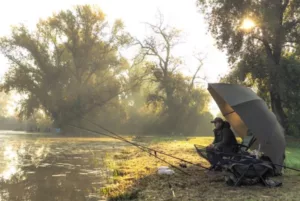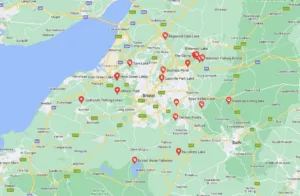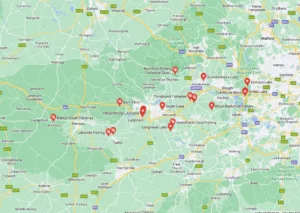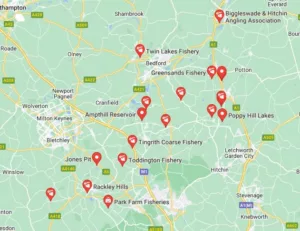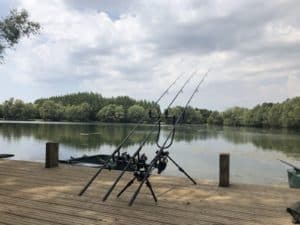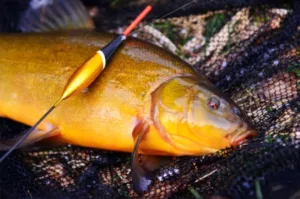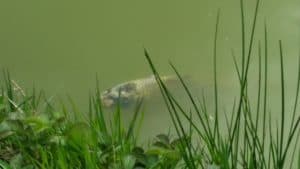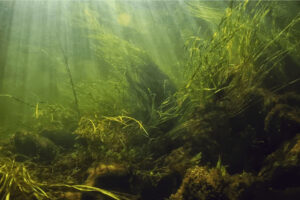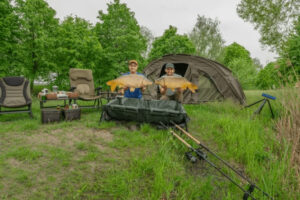Today I’m just going to run you through my thoughts on fishing leads also known as fishing weights, when to use them, with what rig and how to get the best out of them.
Why do you need a lead?
Nine times out of ten when you are carp fishing you need a lead of some description, usually needing a certain type of lead to hit a long distance or get out onto a spot, therefore need a heavier amount of weight to reach that distance and typically a more streamlined design.
Other reasons you use a lead in your carp fishing is to pull that hook home when a fish picks up the bait and sucks and blows, you’re waiting for that lead to pull the hook home firmly into the lip to set the hook.
There are a number of different styles of leads, in lots of different sizes and this can give you an edge, by using the right lead, in the right situation. When choosing a lead, bear in mind its size and shape. There are some instances where you need a heavy lead to get a certain range, typically these types of leads are long and thin.
Other examples of needing a different type of lead would be when you are fishing a lake with a lot of undertow or moving weed, so you will need a heavy lead, perhaps with protrusions to hold your rig perfectly positioned on the bottom.
If I turn up in my swim and there are fish showing and it’s 30 or 40 yards out, the last thing I want to be doing is bombing a huge 4oz lead nearby and spooking them away from the spot. A simple 1oz lead square pear lead, with a simple rig and im easily going to hit my spot at 30 yards, giving absolutely minimal disturbance and giving me maximum chance of getting a bite very very quickly.
Different Types of Lead for Carp Fishing
Let’s run you through the leads that are available on the market, when to use them and for what situation.
The Dumpy Pear Lead
First up is the dumpy pear lead, this is my first choice when a marker float fishing. Its dumpy round profile makes it great for feeling the lake bed to help identify whether it is made up of gravel or the silty areas. It’s rounded profile also allows me to drag it across the bottom locate clear areas or patches of gravel.
The Dumpy Square Pear Lead
Next up we have the dumpy square pear, this is my go-to lead when fishing with running rigs. I always go for a heavy lead around 3-4 oz when using this type of rig, the squared off profile allows it to lay nice and flat on the bottom and always fishing with a backstop. When a fish picks up the rig, it slides up the line and hits the bead and the leads have done its job perfectly.
The Tractor Lead
Next up is the tractor lead specifically designed for fishing rivers. It’s large dimples around the surface area, allow it to grip to the bottom of the river bed.
The Flat Pear Lead
The flat pear, it’s my choice to lead when I am fishing with either a weed safety bolt bead or a safety bolt bead. Its low profile allows the lead setup to lay completely flat to the lake bed you are fishing over.
The Long Ranger Lead
The long ranger, a perfect lead for when fishing at range. I use this lead with my helicopter set up. Its tapered body and front-loading of weight allows it to travel through the air. It’s also the lead used when I’m fishing with a chod rig. This lead will plug into the silt and allow me to fish the chod rig effectively
Inline Flat Pear Lead
The inline flat pear, one of my favourite leads in the range. I use it from multiple lead set-ups such as the shocker rig. This is a running lead on a leader, basically, the fish pick it up and the lead comes into play but actually passes along the set-up. The second one is a drop-off in-line, ideal for fishing in weedy and snaggy situations. This is where I leader passes over the top of the inline lead and can when necessary drop-off. The final rig is a solid PVA bag, this is where my rig and my lead is completely inside the bag, it’s ideal for fishing at range or fishing up against beds and bullrushes etc. I’m actually putting my rig inside the bag, I’m loading it up with all of the attractants, food, pellets and boilies and then putting my lead into the top of the bag, I continue loading a really packed tight bag and cast that straight out.
Inline Flat Square Lead
The last lead in the range is it inline flat square. This is a new lead, I typically use this when fishing my stalker setup. Typically fishing in the edge, I lower this lead down to a spot and its ultra-low profile will make it completely unobtrusive to any carp in the area.
Lead Coatings and Colouring
When selecting a lead it’s also well worth bearing in mind the coating or coloration that you use, just like your terminal tackle components, it’s all about blending everything into the lake bed. In the past, many companies plastic coated their leads and are still doing this, but many have now moved over to the texture coating and this has a number of advantages over other leads. They are available on the market, straight off the shelf with a textured finish, speckled coloration and a non-glare coating. They really do give you a major edge, but I have also got a few little tricks and tips that I can show you to customise your lead to suit the angler situation you find yourself in.
Use This Tip On Clay Lake Beds
First up I take the lead and I actually rub clay into them, as simple as getting some clay out of the margin and rubbing it into the lead, the texture coating grips the clay. Leave it to dry for 15-20 minutes and you are left with a lead that is perfect for fishing over clay or gravel bottoms.
Hide The Lead With Silkweed
Next up I’ve taken some silkweed from the margin of the lake and I’ve just simply wrapped this around the lead, again, the texture coating grips the silkweed and if left for 20 minutes to half an hour, it will dry out and allow me to create a lead it’s perfect for fishing over weed and silkweed.
Marker Pens
Finally, I’ve taken a black marker pen and drawn over one of the leads, the coated lead absorbs the pen ink into it and it is ideal for fishing over silt bottoms. With a little bit of extra effort, you can actually customise one of these textured leads to suit the angling situation you’re fishing in.
Adding Bait to Your Lead
To finish off, a few little ways of adding attractants. First up, there’s nothing to say you can’t use your lead to act as a method feeder. Simple, method mix, push your lead inside and you can form the method mix around your lead set up creating a ball.
Paste is often an underused bait. Again, great to wrap around your lead. Just take a pinch of the paste, I often do this when I am fishing on the river. Mould it into your tractor lead, that textured coat can help it grip. Get it all the way around, even adding in things like hemp to the paste and create a real appetizing parcel of food for the fish. You can also mould a bit around the hook bait and the hook and again coat that in my particle mix, in this case, is hemp seed and once that’s cast out on the spot in the river, that slowly start to break down over a period of time, sending nice attractions and smells downstream, hopefully drawing the fish up onto my hook bait.
My final little lead edge, this is something I always do when I’m fishing runs waters and I’m trying to get a bite very quickly. The lead goes into the boilie dip, straight into the food dip, finally into the green lip mussel. Turn it over and that is an instant bite. If there’s fish in the area, out the lead, goes lead goes down to the bottom, oil leaking up to the surface, food dip around the lead and green-lipped mussel in the swim, this is a guaranteed bite.
So there you have it, my thoughts on leads, not the most interesting subject, but hopefully I have given you few ideas and tips for next time you chuck one out, you’ve done everything you can to maximise your chances.
I have made a lot of mistakes during my fishing sessions and don’t want you to make the same mistakes. I’ve learned the hard way over 20 years of fishing most weekends, testing, tweaking, and testing again and now want to help you excel with your carp fishing.
If you need any help, you can reach me at Fishing Again’s Facebook page
Last Updated on February 4, 2024 by Shane

